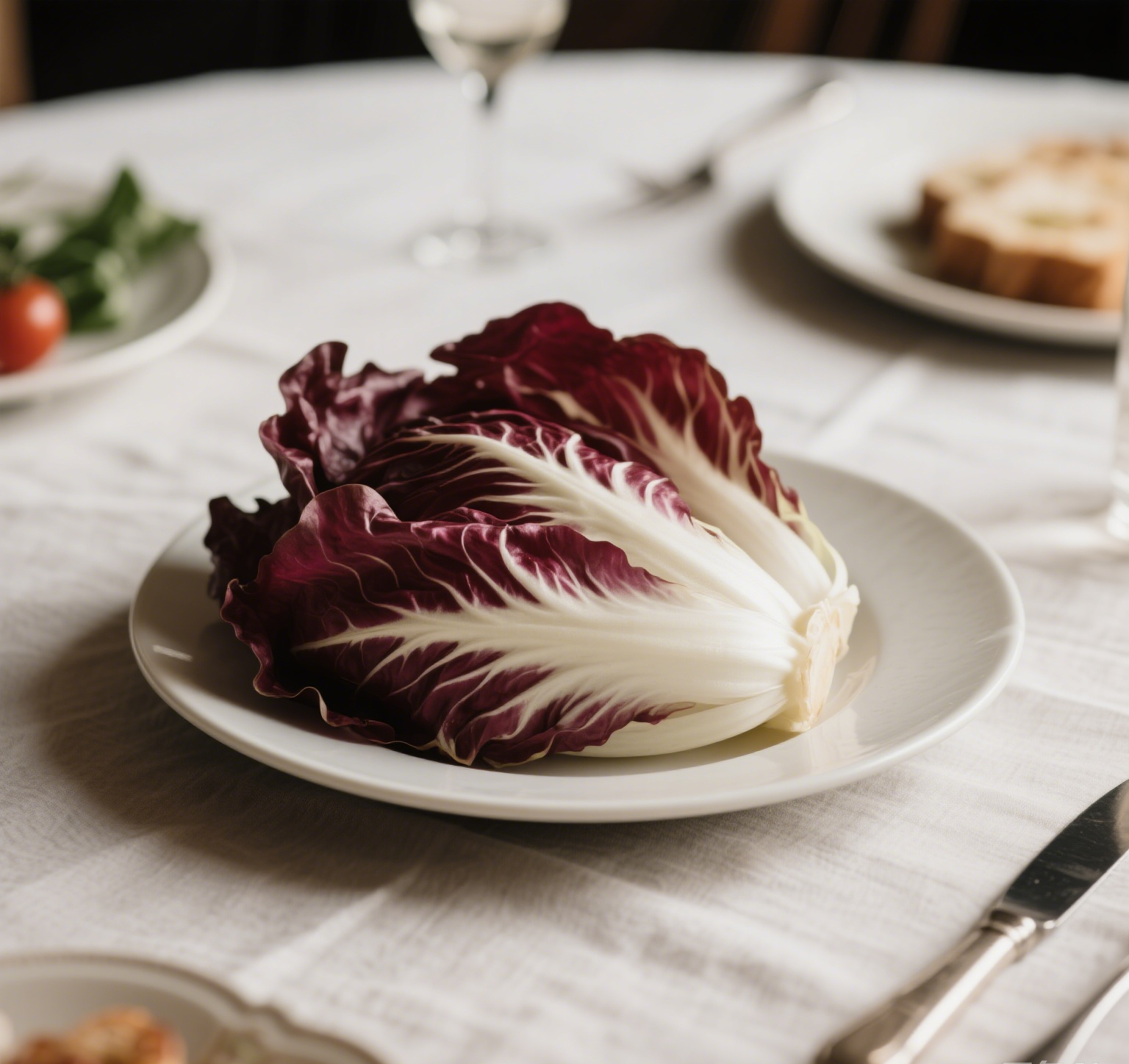A Guide for Home Cooks
Radicchio, with its vibrant purple leaves and pleasantly bitter flavor, is a staple in Italian cuisine and a rising star in kitchens worldwide. If you’re a home cook looking to elevate your salads, pastas, or even grilled dishes, this chicory family member deserves a spot on your grocery list. But how do people eat radicchio, and how can you make the most of its unique taste and texture? Let’s explore creative ways to prepare and enjoy this versatile ingredient.

What Is Radicchio? A Quick Introduction
Before diving into recipes, let’s clarify what radicchio is. Often mistaken for red cabbage, radicchio is a type of leafy chicory known for its bold color and slightly bitter, earthy flavor. Popular varieties include Radicchio di Chioggia (the round, cabbage-like type) and Radicchio di Treviso (elongated with tapered leaves). Rich in antioxidants, fiber, and vitamin K, it’s as nutritious as it is delicious.
1. Raw: Salads and Appetizers
The simplest way to eat radicchio is raw. Its crisp texture and bitterness balance creamy or sweet ingredients, making it ideal for salads.
- Classic Italian Radicchio Salad: Pair thinly sliced radicchio with fresh pear, walnuts, and gorgonzola cheese. Drizzle with a balsamic vinaigrette to mellow the bitterness.
- Citrus Contrast: Combine radicchio with orange segments, avocado, and a honey-mustard dressing for a refreshing side dish.
- Crunchy Garnish: Use small radicchio leaves as edible cups for appetizers like goat cheese mousse or shrimp salad.
2. Grilled or Roasted: Bold, Caramelized Flavors
Cooking radicchio softens its bitterness and unlocks a smoky, nutty sweetness.
- Grilled Radicchio Wedges: Brush halved radicchio heads with olive oil, sprinkle with salt, and grill for 3–4 minutes per side. Finish with a drizzle of balsamic glaze and shaved Parmesan.
- Roasted with Root Vegetables: Toss radicchio wedges with carrots, beets, and garlic. Roast at 400°F (200°C) until caramelized.
- Pizza Topping: Add charred radicchio to homemade pizzas alongside prosciutto and mozzarella.
3. Sautéed or Braised: Comfort Food Upgrade
Wilted radicchio adds depth to pasta, risotto, and grain bowls.
- Garlic Sauté: Heat olive oil in a pan, add minced garlic and shredded radicchio, and sauté until wilted. Toss with cooked pasta, lemon zest, and chili flakes.
- Braised with Bacon: Cook diced bacon until crispy, then braise radicchio in the rendered fat with a splash of apple cider vinegar. Serve as a side for roasted meats.
- Risotto Stir-In: Fold sautéed radicchio into creamy risotto during the final minutes of cooking.
4. Pickled or Fermented: Tangy and Unexpected
Preserving radicchio extends its shelf life and adds zing to dishes.
- Quick Pickle: Submerge radicchio slices in a brine of vinegar, sugar, and spices for 24 hours. Use pickled radicchio in sandwiches or grain bowls.
- Fermented Slaw: Mix shredded radicchio with cabbage, carrots, and salt, then ferment for a probiotic-rich condiment.
5. Creative Pairings: Balancing Bitterness
Radicchio’s bold flavor shines when paired with complementary ingredients:
- Sweet: Honey, figs, caramelized onions
- Creamy: Ricotta, blue cheese, avocado
- Savory: Pancetta, walnuts, aged balsamic
- Acidic: Lemon juice, apple cider vinegar
Try adding radicchio to tacos, flatbreads, or even smoothies (in small amounts!) for a nutrient boost.
6. Buying and Storing Radicchio
To enjoy radicchio at its best:
- Choose firm heads with crisp, vibrant leaves. Avoid wilting or brown spots.
- Store unwashed in a plastic bag in the fridge for up to two weeks.
Why You Should Eat Radicchio Regularly
Beyond its culinary flexibility, radicchio offers health perks:
- Digestive Health: High in fiber and prebiotics.
- Anti-Inflammatory: Contains anthocyanins (the pigments behind its purple hue).
- Low-Calorie: A nutrient-dense addition to weight-conscious diets.
Final Thoughts: Embrace the Boldness
Learning how to eat radicchio opens doors to bolder, more sophisticated flavors in everyday cooking. Whether raw, grilled, or braised, this ingredient adds complexity to meals while boosting nutritional value. Start with a simple salad, then experiment with roasting or pickling—you might just discover a new favorite!
